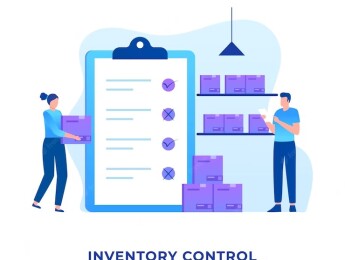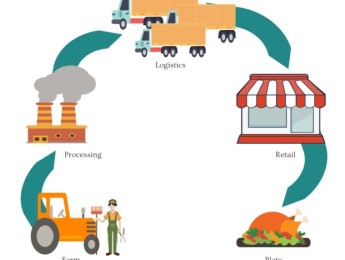Introduction
FIDIC contracts, developed by the International Federation of Consulting Engineers (FIDIC), are globally recognized standards for construction and engineering contracts. Established in 1913, FIDIC has continually refined its contract forms to address the evolving needs of international construction projects, ensuring clear risk allocation, dispute resolution, and performance management. These contracts, such as the Red, Yellow, and Silver Books, have become essential tools in global infrastructure development, providing a standardized framework that fosters transparency, fairness, and efficiency. Their widespread use in both public and private sector projects highlights their importance in ensuring successful project execution across borders.
Types of FIDIC Contracts
FIDIC (Fédération Internationale Des Ingénieurs-Conseils) contracts are widely used in international construction and engineering projects to provide a standardized approach to contracting. Each type of FIDIC contract is tailored to specific project requirements, offering different levels of risk allocation and responsibilities for the parties involved. The Red Book is the most commonly used FIDIC contract for construction works where the design is provided by the employer, and it is typically applied to traditional construction contracts. The Yellow Book is used for plant and design-build contracts, where the contractor is responsible for both design and construction, which allows for more flexibility in the design process while placing greater responsibility on the contractor. The Silver Book is designed for EPC (Engineering, Procurement, and Construction) or turnkey contracts, often used in large-scale projects like infrastructure development, where the contractor assumes full responsibility for delivering the project on a fixed-price, turnkey basis, including most of the risks. The Green Book is a short form of contract, suitable for smaller projects or those with straightforward requirements. It is designed to simplify the contractual process for minor works, with fewer administrative demands.
Other FIDIC forms address specific project needs: the White Book is used for consultancy services, outlining the relationship between a consultant and a client. The Gold Book is tailored for Design, Build, and Operate (DBO) contracts, making it ideal for long-term projects that require ongoing operation and maintenance. The Blue Book is used for dredging and reclamation works. These various forms provide contractors, employers, and consultants with the flexibility to choose a contract best suited to the specific nature of the project.
- Red Book: Traditional construction contract where the employer provides the design.
- Yellow Book: Design-build contract with the contractor responsible for design and construction.
- Silver Book: EPC/Turnkey contract where the contractor takes on most of the risk, ideal for large infrastructure projects.
- Green Book: Short form contract for simple, small-scale projects.
- White Book: Consultant services contract.
- Gold Book: DBO contract suited for long-term projects requiring design, construction, and operation.
- Blue Book: Contract for dredging and reclamation works.
Each FIDIC contract form serves a distinct purpose, ensuring that the right balance of responsibilities and risks is assigned based on the nature of the project, promoting fair and transparent contract administration across the globe.
Summary of Types of FIDIC Contracts
Type of FIDIC Contract | Description |
Red Book | Traditional construction contract where the employer provides the design. |
Yellow Book | Design-build contract with the contractor responsible for both design and construction. |
Silver Book | EPC/Turnkey contract where the contractor assumes most of the risk, ideal for large infrastructure projects. |
Green Book | Short form contract for simple, small-scale projects. |
White Book | Consultant services contract outlining the relationship between a consultant and a client. |
Gold Book | DBO contract suited for long-term projects requiring design, construction, and ongoing operation. |
Blue Book | Contract for dredging and reclamation works. |
Key Clauses in FIDIC Contracts
Key clauses in FIDIC contracts define the roles, responsibilities, and risk allocations between the employer, contractor, and engineer, creating a balanced framework for managing construction and engineering projects. The Responsibilities of the Employer outline the duties that the employer must fulfill, such as providing the contractor with the project design, necessary permits, site access, and timely payments. The employer is also responsible for ensuring that the project scope and objectives are clearly defined, enabling smooth execution. In return, the Obligations of the Contractor stipulate that the contractor must perform the works in accordance with the contract's specifications, complete the project within the agreed timeframe, and ensure quality and compliance with technical standards. The contractor is also responsible for managing the workforce, procuring materials, and mitigating risks associated with the construction process.
The Role of the Engineer is critical, as the engineer acts as a mediator between the employer and contractor, overseeing the project to ensure that it adheres to the contract's terms. The engineer has the authority to approve variations, monitor progress, and certify payments. While they are employed by the employer, their duty is to act impartially when resolving disputes or making decisions that affect both parties. Variations and Adjustments clauses allow for changes to the scope of work, which may arise due to unforeseen circumstances or the need for modifications. These variations may lead to adjustments in the contract price or time for completion, and the engineer typically evaluates and approves such changes.
The Time for Completion and Extensions clause is essential for managing project timelines. It specifies the agreed duration for completing the work and outlines the circumstances under which the contractor may seek an extension, such as delays caused by the employer, adverse weather conditions, or force majeure events. Proper documentation and approval of extensions are crucial to avoid penalties for delays. These key clauses ensure clarity and transparency in project execution, safeguarding the interests of both the employer and the contractor while promoting effective project management.
- Responsibilities of the Employer: Providing project design, permits, site access, and timely payments.
- Obligations of the Contractor: Completing the project within the agreed timeframe and specifications, managing workforce and materials.
- Role of the Engineer: Acting as a neutral overseer, approving variations, and resolving disputes.
- Variations and Adjustments: Allowing modifications to the scope of work, with potential changes to price and schedule.
- Time for Completion and Extensions: Defining the project timeline and criteria for granting extensions due to delays or unforeseen events.
These clauses form the backbone of a FIDIC contract, ensuring that all parties have clear guidelines and mechanisms to handle changes, responsibilities, and potential conflicts during the project lifecycle.
Risk Allocation in FIDIC Contracts
Risk allocation in FIDIC contracts is carefully structured to distribute risks between the employer and the contractor, ensuring that each party is responsible for the risks they are best equipped to manage. Employer's Risks typically cover issues beyond the contractor’s control that might affect the progress or outcome of the project. These can include problems with the site, such as unforeseen ground conditions, or issues related to permits, approvals, and ownership of the land. In some cases, the employer may also bear the risk of delays in design approval or changes in laws or regulations that impact the project's execution. Additionally, the employer may be liable for payment delays or other financial issues that could hinder the contractor’s ability to complete the work.
On the other hand, Contractor’s Risks pertain to the areas directly within the contractor's control, such as the quality and performance of the work, the workforce management, and the procurement of materials and equipment. The contractor is also responsible for ensuring that the project is completed on time and meets the technical specifications outlined in the contract. If delays, defects, or damages occur due to the contractor's mismanagement or negligence, the contractor typically bears the financial and legal consequences. Managing these risks effectively requires thorough planning and risk mitigation strategies, including insurance and contingency plans.
In addition to these specific risk categories, Force Majeure and Exceptional Events are also addressed in FIDIC contracts. These are unforeseen, extraordinary events beyond the control of either party, such as natural disasters (earthquakes, floods), wars, or pandemics. The contract defines the procedures to be followed in such cases, often allowing for time extensions, suspension of work, or, in extreme cases, termination of the contract without penalties for either party. Force majeure clauses ensure that neither the employer nor the contractor is unfairly penalized for events they could not have anticipated or prevented, providing a mechanism for dealing with extreme circumstances while maintaining contractual integrity.
- Employer's Risks: Unforeseen site conditions, delays in approvals, regulatory changes, financial risks, and project design issues.
- Contractor’s Risks: Performance of the work, project quality, management of labor and materials, and adherence to the project timeline.
- Force Majeure and Exceptional Events: Natural disasters, wars, or other uncontrollable events that may delay or suspend the project, with provisions for time extensions or termination without penalties.
These risk allocation clauses ensure that each party is held accountable for the risks they can control, while also providing protection against extraordinary circumstances, helping to balance risk and responsibility fairly in FIDIC contracts.
FIDIC Contracts and International Law
FIDIC contracts are designed to ensure compliance with international standards, making them widely accepted and utilized in global construction and engineering projects. These contracts provide a standardized framework that aligns with international best practices in project management, risk allocation, and dispute resolution, ensuring that contracts are transparent, fair, and legally sound across various jurisdictions. The use of internationally recognized principles such as equitable risk distribution, professional liability, and the inclusion of clearly defined roles and responsibilities helps create contracts that are both reliable and efficient, especially for multinational projects where consistency is critical. FIDIC’s standardized approach also facilitates smoother communication between parties from different countries and legal backgrounds, reducing the potential for misunderstandings and disputes.
Despite their international scope, FIDIC contracts must also consider the interaction with local legal systems. While FIDIC provides a strong foundation rooted in international law, contracts are often subject to local legal frameworks that may have unique requirements. For example, local labor laws, environmental regulations, and contract enforcement procedures can vary significantly from one country to another. Therefore, FIDIC contracts are typically tailored to comply with these local laws without compromising their international integrity. Local amendments or "Particular Conditions" are often added to the standard FIDIC forms to ensure that the contract aligns with the specific legal, economic, and cultural context of the region where the project is being executed.
Navigating the relationship between FIDIC contracts and local legal systems requires careful consideration, as local courts may interpret certain clauses differently than in international contexts. Additionally, the enforcement of dispute resolution mechanisms, such as arbitration or Dispute Adjudication Boards (DABs), may depend on local legal systems' recognition of international arbitration awards or similar rulings. In some cases, FIDIC contracts may need to adapt to local practices regarding public procurement, tax regulations, or health and safety standards. By incorporating flexibility for local legal requirements while maintaining a robust international structure, FIDIC contracts enable smooth execution across borders, ensuring both global applicability and local relevance.
- Compliance with International Standards: Aligning with global best practices in risk allocation, project management, and dispute resolution to ensure fairness and transparency in cross-border contracts.
- Interaction with Local Legal Systems: Tailoring FIDIC contracts to comply with local laws, regulations, and practices while maintaining their core international framework, particularly through the use of "Particular Conditions."
These aspects of FIDIC contracts enable their effective use in international projects, combining global uniformity with the necessary adjustments to meet local legal requirements, ensuring that projects remain compliant, enforceable, and well-managed across different jurisdictions.
Advantages and Challenges of FIDIC Contracts
FIDIC contracts offer numerous advantages, making them the preferred choice for construction and engineering projects worldwide. One of the key benefits of using FIDIC contracts is their global recognition and acceptance. These contracts are standardized and structured in a way that promotes clarity, fairness, and balance between the employer and contractor, which is essential in complex projects involving multiple stakeholders from different countries. The standardized format also helps reduce the time and cost of contract negotiations, as the parties can rely on widely accepted terms and conditions. Another advantage is the clear risk allocation and role definitions, which help minimize disputes and ambiguities. FIDIC contracts provide a well-defined framework for managing changes in project scope, timelines, and costs through robust variation and claims mechanisms, making them highly adaptable to different types of projects and unpredictable circumstances. Their comprehensive dispute resolution provisions, including Dispute Adjudication Boards (DABs) and arbitration, further enhance their appeal, ensuring that conflicts can be efficiently managed and resolved without disrupting the project.
However, there are some common challenges associated with the use of FIDIC contracts, especially in projects that span multiple jurisdictions or involve stakeholders unfamiliar with the FIDIC framework. One of the primary challenges is the need for careful customization of the contract to fit local laws and project-specific requirements. While FIDIC contracts are adaptable, failure to make the necessary adjustments through "Particular Conditions" can lead to conflicts with local legal systems or project goals. Another challenge is that some parties, particularly contractors, may view FIDIC contracts as overly detailed or complex, which can lead to delays in understanding and implementing contract terms. Additionally, the strict procedural requirements, especially related to claims and time limits, can be daunting for parties that are not well-versed in FIDIC practices. Mismanagement of these procedural obligations can lead to lost claims or disputes that might otherwise have been avoided.
To overcome these challenges, proper training and awareness of FIDIC's terms and processes are essential for all stakeholders involved in the project. Employers and contractors should ensure that their legal and project management teams are familiar with the FIDIC framework and any local amendments that may be required. Furthermore, clear communication and collaboration between the parties throughout the project lifecycle can help mitigate misunderstandings and manage risks more effectively. Incorporating regular reviews of contract performance and compliance, and utilizing dispute avoidance mechanisms like DABs early on, can also prevent minor issues from escalating into larger conflicts.
- Benefits of Using FIDIC Contracts: Global recognition, clear risk allocation, standardized format, adaptability to project changes, and robust dispute resolution mechanisms.
- Common Challenges and How to Overcome Them: Need for careful customization to local laws, complexity of contract terms, and strict procedural requirements; overcome by stakeholder training, clear communication, and proactive contract management.
By leveraging the strengths of FIDIC contracts and addressing the potential challenges through proper management and understanding, these contracts can serve as powerful tools for ensuring successful project execution in a fair and efficient manner.
Best Practices for Managing FIDIC Contracts
Managing FIDIC contracts effectively requires the application of structured and proactive strategies to ensure that the project is executed smoothly and within the terms agreed by both parties. Effective contract management strategies start with a thorough understanding of the contract’s specific terms, including risk allocation, timelines, and dispute resolution mechanisms. Project managers and legal teams must be familiar with both the General Conditions and the Particular Conditions to ensure that all clauses are correctly interpreted and implemented. One key strategy is to establish clear lines of communication between the employer, contractor, and the engineer, as FIDIC contracts assign critical roles to each party. Regular project meetings and updates can help identify potential risks or issues early on, enabling timely adjustments or corrective actions. Additionally, keeping comprehensive records of decisions, communications, and progress reports is vital for tracking compliance with contract terms and resolving any claims or disputes that arise. Adopting technology such as contract management software can help streamline these processes and ensure real-time updates and alerts.
Another essential component of effective FIDIC contract management is ensuring that all variations and changes are managed according to the contract's provisions. Variations are common in construction projects, and FIDIC contracts include detailed clauses to address changes in scope, costs, and timelines. However, managing these variations requires strict adherence to the contract’s procedures, including submitting claims within specific timeframes and ensuring proper documentation. This helps prevent disputes from escalating and keeps the project on track. Risk management should also be integrated into the contract management strategy, with both the employer and contractor regularly reviewing potential risks and mitigating measures. Clear delegation of responsibilities and ensuring that each party understands their contractual obligations can prevent misunderstandings and delays.
Ensuring compliance and avoiding disputes is another crucial aspect of managing FIDIC contracts. Compliance begins with aligning project activities with the contract’s terms, particularly those related to timelines, quality standards, and payment schedules. Monitoring project progress and conducting regular audits can ensure that contractual obligations are met on time and within budget. In cases where potential non-compliance or disputes arise, it is important to follow the contract’s dispute resolution mechanisms, such as the use of Dispute Adjudication Boards (DABs), mediation, or arbitration. Engaging the DAB early can help resolve issues before they escalate into larger conflicts, reducing the risk of project delays or costly legal proceedings. Another best practice is to foster a collaborative working relationship between the employer and contractor, encouraging open communication and a shared commitment to the project’s success. Establishing clear and mutually agreed procedures for claims, variations, and adjustments can prevent many disputes from occurring in the first place.
- Effective Contract Management Strategies: Ensure clear understanding of contract terms, establish open communication, maintain comprehensive records, use technology for tracking, and manage variations and risks proactively.
- Ensuring Compliance and Avoiding Disputes: Monitor project progress, conduct regular audits, follow dispute resolution mechanisms, engage DAB early, and promote collaborative relationships between parties.
By implementing these best practices, project managers can successfully manage FIDIC contracts, ensuring that all parties fulfill their obligations, variations are handled smoothly, and disputes are resolved efficiently, ultimately contributing to the project’s overall success.
Conclusion
In conclusion, FIDIC contracts play a critical role in shaping the global construction landscape by providing a standardized and transparent framework for managing complex projects. Key points include their clear risk allocation between parties, robust dispute resolution mechanisms, and adaptability to various types of projects through contracts like the Red, Yellow, and Silver Books. These features make FIDIC contracts essential tools for ensuring fair, efficient, and successful project delivery. Looking ahead, as the construction industry continues to evolve with new technologies and sustainability goals, FIDIC contracts are likely to further adapt, remaining integral in facilitating international collaboration and maintaining global construction standards.
























